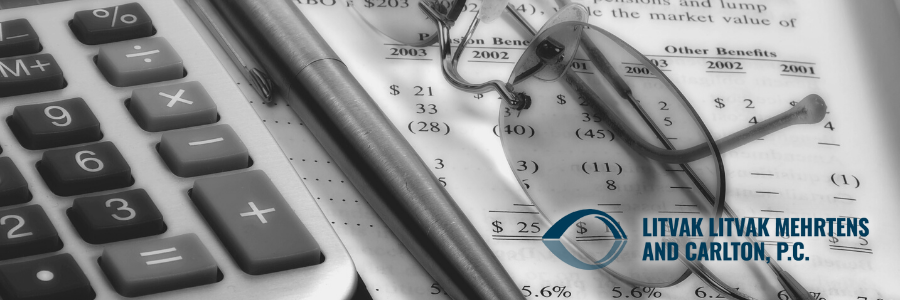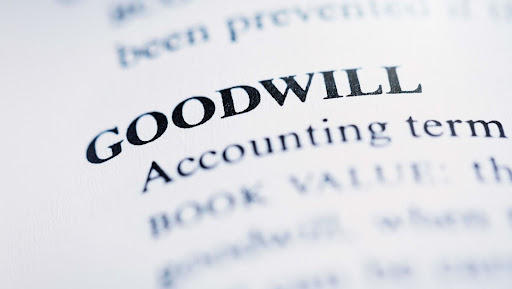Intangible Asset Valuation in Divorce
Home » Denver Divorce Attorneys » High Asset Divorce » Asset Valuations » Intangible Asset Valuation in Divorce
Valuation of Intangible Assets in Divorce

During a divorce, you’ll need to make difficult decisions when it comes to the division of your property. This includes who gets to stay in the home or who takes ownership of the dogs. In addition to dividing tangible marital property, you may also need to consider intangible assets. Figuring out intangible asset valuation can be difficult on your own. That’s why it’s important to have a qualified Denver divorce attorney on your side.
At Litvak Litvak Mehrtens and Carlton, not only do we handle business valuation, child support, child custody, and high asset divorce cases, we also help you determine intangible asset value. To speak with a qualified attorney and protect your legal rights, contact our office today. Call 303-951-4506 or fill out our online intake form to arrange a consultation.
What Are Intangible Assets?

An intangible asset is one that has no physical form. Patents, copyright, franchises, goodwill, trademarks, and trade names, as well as software, are examples of intellectual property. Contrary to physical and financial possessions, this is not the case. Intangible assets are notoriously difficult to value. They struggle with non-rivalry and non-excludability, which are common market failures.
In 2013, the US Bureau of Economic Analysis began measuring private-sector investments in intangible assets as part of its GDP collection. From a cost standpoint, its intangible assets measure comprises accumulated investment on software, research and development, and intellectual property relating to the creative arts. Since 2012, private sector investment in intellectual property products has increased at a 6.2 percent yearly rate, reaching $938 billion in October 2018.
Examples of Intangible Assets

Generally, a non-physical asset with a useful life of more than one year is referred to as an intangible asset. These assets are often considered as part of a merger or acquisition, when the acquirer is permitted to attribute a fraction of the purchase price to intangible assets obtained. Internally created intangible assets are difficult to account for on a balance sheet. Intangible assets include the following examples.
Marketing Assets
- Trademarks
- Domain names on the Internet
- Noncompete agreements
- Newspaper banner
Customer Assets
- Order log
- Customer lists
- Customer relationships
Artistic Assets
- Literary works
- Musical works
- Performance events
- Movies and TV shows
- Photographs and pictures
Contract Assets
- Service contracts
- Licensing agreements
- Broadcasting rights
- Lease agreements
- Franchise agreements
- Employment contracts
- Drilling rights, mineral rights, water rights, and other use rights
Technology Assets
- Computer software
- Patents and patented technology
- Trade secrets, such as formulas and recipes
What Are Different Methods of Intangible Asset Valuation?

Evaluating the value of intangible assets as generators of corporate value becomes increasingly important as intellectual investments develop. Both IFRS and GAAP are mixed models that compensate for intangible assets obtained as part of a company combination differently than those generated internally.
The former must be valued at fair market value at the time of purchase, added to the acquirer’s accounting records, and then amortized or subjected to periodic impairment tests. Internally produced intangible assets do not typically display on the income statement, and related expenditures are expensed when they are incurred, according to GAAP. Such investments are only reported under IFRS if specific requirements are satisfied.
A depreciation charge for intangible assets that are on the financial statements and have a definite lifespan, as well as a charge in research and development or sales and management expenses for internally developed assets that are not capitalized, are generally included in an enterprise’s income under GAAP.
It might also comprise an impairment amount realized on goodwill or capitalized intangible assets with an unknown useful life. Analysts comparing organizations across borders must be aware of the variations in intangibles between GAAP and IFRS.
For organizations with distinct development objectives, the varying accounting treatment of purchased vs domestically generated intangible assets might cause comparability concerns. A company that built its intangible investment portfolios through acquisitions is likely to have a larger percentage of intangible assets recorded on its accounting records than one that built intangible assets organically. This will have an impact on the balance sheet ratios as well as reported earnings.
Relief from Royalty Method
The RRM determines the worth of an investment based on the theoretical royalty rates that would be avoided if the asset were owned rather than licensed. The RRM’s argument is quite self-evident. The underlying business does not have to pay for the right of using an intangible asset if it owns it.
The RRM is frequently used to evaluate domain names, trademarks, licensed software, and in-progress research and development that may be linked to a specific income stream and when data on royalty and licensing payments from previous market transactions is available. The RRM entails the following phases in general.
- Financial data for the whole company is projected, covering revenue, rates of growth, and tax rates and forecasts. In most cases, the underlying data is collected from the entity’s administration.
- Estimating a reasonable royalty fee for the intangible asset using publicly accessible information on royalty rates for comparable domain names and the industry in issue. Filings with the Securities and Exchange Commission (SEC) for similar publicly listed firms might also be helpful.
- Estimate the useful life of the intangible asset.
- Apply the royalty rates for the predicted stream of revenue.
- Estimate the discount rate for royalty savings after tax, then discount to the current value.
Multiperiod Excess Earnings Method
A form of discounted cash-flow assessment is the MPEEM. The MPEEM separates the cash flows that might be connected with a particular intangible asset and determines fair market value by reducing them to the current value, rather than concentrating on the entire business. When one asset is the major driver of a company’s value and the relevant cash flows can be separated from the firm’s total cash flows, the MPEEM is used.
Early-stage businesses and technology companies are ideal candidates for this strategy. Software and customer connections are examples of assets that commonly generate such cash flows and may be analyzed using the MPEEM’s fair value evaluation. The MPEEM generally entails the stages below.
- Projecting financial information
- Using a contributing asset charge to deduct the cash flows related to all other assets. The CAC is a type of economic rent for use of all other assets in producing overall cash flows, and it is made up of the required return on other assets as well as an amount needed to replace the market value of some contributing intangible assets.
- Calculating and discounting the cash flows related to the intangible asset under consideration for valuation.
With MPEEM, determining the CAC might be difficult. The needed CAC returns must be aligned with a risk analysis of particular asset classes and should correspond to the corporate WACC overall. In addition, the PFI utilized in the model should have a projection period that corresponds to the asset’s expected useful life. This might necessitate a lot of deliberation.
With and Without Method
The WWM calculates the distinction between different discounted cash-flow concepts: one that depicts the commercial enterprise’s current system with the asset in play, and another that does not. Noncompete agreements are frequently valued using the WWM.
Real Option Pricing
Competition must be limited in the case of contingency for a genuine choice to have considerable economic value. Patents, for example, grant the holder the right but not the responsibility to prevent others from creating, using, selling, advertising for the sale, or importing the protected innovation.
If the net present price of the asset project is near zero at the date of valuation, an underdeveloped patent may have no intrinsic value. Nonetheless, the patent may have significant time worth based on the potential that the project’s net value may emerge to be favorable at some point during the patent’s life.
Replacement Cost Method Less Obsolescence
This method necessitates an evaluation of the replacement expense for the intangible asset, or the cost to create an intangible asset with comparable value to the subject intangible, using modern techniques, standards of production, design, layout, and quality workmanship, at market rates as of the date of the assessment. After that, a less obsolescence factor is applied to the substitution cost in relation to the intangible asset.
Are Intangible Assets Recorded at Fair Market Value?
The valuation of an intangible asset is recorded in the accounting records at its original cost, much like tangible assets like property, plants, and machinery. The value represented on the balance sheet might include all expenditures necessary to prepare the asset for its intended function, such as attorney costs, in addition to the asset’s acquisition price.
Companies must record these properties at their fair market values on the date of purchase, according to the FASB’s Statement of Financial Accounting Standards No. 141. It also stipulates that some intangible assets must be classified separately from goodwill. The following are examples of intangible resources that should be kept separate from goodwill. Such intangible assets are divided into two distinct categories: legal and competitive intangible assets.
- Trade names
- Trademarks
- Collective marks
- Service marks
- Newspaper banners
- Certification fees
- License fees
- Financial reporting
- Computer software
- Customer relationships
- Competitive advantages
- Brand recognition
- Grant rights
- Other intellectual property
- Comparable assets
What Is the Most Common Valuation Method for Intangible Assets?
Given their abstract and special character, determining how to value intangible assets boils down to selecting the appropriate valuation approach and using sound judgment. It’s important to note that the five methods of valuing intangible assets derive from the three valuation methods listed below.
For determining the economic worth of a firm, three primary types of valuation methodologies are typically used: market, cost, and income. Each method has pros and cons. The most common of the three methods is the income approach rather than the cost approach or market approach. We outline this approach below.
The income method assumes that a property’s actual full cash value is equal to the future value cash flows it will generate over the course of its residual economic life. It is a traditional method of appraisal, but it necessitates a great deal of research and study. Because it depends on so many variables, the income valuation technique has the greatest model risk—the chance that your model will turn out to be incorrect.
However, the time and effort necessary to use the income technique generally result in a more accurate evaluation, especially when paired with other methods. This method may be used to predict value based on several scenarios and to do a risk assessment.
Contact a Denver Divorce Attorney Today
Valuing intangible assets can be extremely challenging without the help of an attorney with experience in this area. Especially when dealing with high asset divorces, we have extensive experience with intangible asset valuation. Intangible and tangible assets often come into play when calculating child support for high income earners or alimony in Colorado. To arrange a consultation with talented, experienced Denver divorce attorneys, please call 303-951-4506 or fill out our online intake form today.
